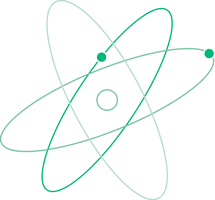Stochastic estimation of ephemerides of navigation satellites in perturbed orbits
DOI:
https://doi.org/10.3103/S0735272718080034Keywords:
navigation parameters, perturbed great-circle orbits, inter-satellite measurement errors, stochastic estimate of ephemeridesAbstract
The errors of navigation satellite ephemerides are one of the key factors to determine the accuracy of satellite navigation. To improve the accuracy of ephemerides calculation, modern satellites are equipped with inter-satellite measurement equipment. However, random interference is inevitably present in the data transmission path and it is necessary to minimize its effect. To perform this task, it is proposed to use the stochastic estimation of ephemerides of navigation satellites that are moving along disturbed orbits in the form of a procedure of parametric optimization based on the minimization of the additive set of two functionals. The optimization of the first functional provides the minimum of uncertainty in the estimation of ephemerides. The optimization of the second functional provides the minimum of the norm of the vector of orbital parameters variations in the current time interval. To illustrate the effectiveness of the proposed approach, a numerical simulation of the satellite constellation’s ephemerides estimation was carried out for the corresponding trajectory perturbations. The simulation results illustrate the possibility to determine the ephemerides of navigation satellites with the accuracy within units of meters based on the approach considered that uses the noisy inter-satellite measurements.References
- PEROV, A.I.; HARISOV, V.N.; ET AL. GLONASS. Principles of Construction and Operation, 4th ed. [in Russian, ed. by A. I. Perov and V. N. Harisov]. Moscow: Radiotekhnika, 2010. URI: http://www.radiotec.ru/book/137.
- FATEEV, A.; VASSILYEV, A.; SOMOV, S. “Attitude guidance and control of the navigation satellites at passage of singular orbit sites,” AIP Conf. Proc., v.1798, n.1, p.020149, 2017. DOI: https://doi.org/10.1063/1.4972741.
- AKIMOV, E.V.; KOZOREZ, D.A.; KRASILSHCHIKOV, M.N.; KRUZHKOV, D.M. “Utilization of GNSS IT technologies for space communication and navigation system autonomous operation,” Vestnik Komp’iuternykh i Informatsionnykh Tekhnologii, n.8, p.9-18, 2017. DOI: http://doi.org/10.14489/vkit.2017.08.pp.009-018.
- KUZNETSOV, V.I.; DANILOVA, T.V. “Multifunctional astronomical self-organizing system of autonomous navigation and orientation for artificial Earth satellites,” Cosmic Research, v.55, n.2, p.142-158, 2017. DOI: https://doi.org/10.1134/S0010952517020046.
- STUPAK, G.G.; REVNIVYKH, S.G.; IGNATOVICH, E.I.; KURSHIN, V.V.; BETANOV, V.V.; PANOV, S.S.; BONDAREV, N.Z.; CHEBOTAREV, V.E.; BALASHOVA, N.N.; SERDYUKOV, A.I.; SINTSOVA, L.N. “Choice of structure of constellation of the prospective system GLONASS,” The Research of the Science City, v.6, n.3-4, p.4-11, 2013. URI: http://www.journal-niss.ru/en/archive_view.php?num=44.
- SHARGORODSKY, V.D.; KOSENKO, V.E.; SADOVNIKOV, M.A.; CHUBIKIN, A.A.; V.I. Moklyak, “The role of laser tools to ensure the accuracy of GLONASS,” The Research of the Science City, v.6, n.3-4, p.17-23, 2013. URI: http://www.journal-niss.ru/en/archive_view.php?num=47.
- HRYSHCHUK, R.; ZAVADA, A. “Earth remote sensing satellite navigation based on optical trajectory measurements,” Recent Advances in Systems, Control and Information Technology, SCIT 2016. Advances in Intelligent Systems and Computing, v.543. Cham: Springer, 2017. DOI: https://doi.org/10.1007/978-3-319-48923-0_54.
- KISLENKO, K.V.; SUEVALOV, V.V. “Technology of high-precision determination of the parameters of the relative motion of space vehicles according to the GLONASS satellite navigation equipment,” Cosmonautics and Rocket Engineering, n.4, p.158-163, 2017.
- TUTTLE, R. “Next-gen GPS navigation satellites must keep improving to keep u.s. ahead of attempts at jamming,” Aviation Week & Space Technology, v.158, n.20, p.46, 2003.
- YUDANIN, A.Y.; MOGILNITSKII, B.S.; TOLSTIKOV, A.S. “Improvement in the orbital parameters of GLONASS navigation satellites based on non-interrogatory measurements of pseudodistances,” Meas. Tech., v.52, n.12, p.1256-1262, 2009. DOI: https://doi.org/10.1007/s11018-010-9430-0.
- BOGDANOV, O.N. “Refinement of trajectory parameters for GPS and GLONASS navigation satellites using IGS position data,” Moscow University Mechanics Bulletin, v.64, n.3, p.61-63, 2009. DOI: https://doi.org/10.3103/S0027133009030029.
- QIAN, Y.J.; JING, W.X.; GAO, C.S. “Autonomous navigation method for multi-satellites mission,” Harbin Gongye Daxue Xuebao, v.42, n.5, p.705-709, 2010.
- DUGIN, N.A.; NECHAEVA, M.B.; ANTIPENKO, A.A.; DEMENT’EV, A.F.; TIKHOMIROV, Y.V. “Measurement of antenna parameters by signals from space satellites of the GLONASS and NAVSTAR navigation systems,” Radiophys. Quantum Electronics, v.54, n.3, p.159-165, 2011. DOI: https://doi.org/10.1007/s11141-011-9278-4.
- SOKOLOV, S.V.; KOVALEV, S.M.; KAMENSKY, V.V.; KUCHERENKO, P.A. “Stochastic filtering for inter-satellite measurements in great-circle trajectories,” J. Instrum. Engineering, v.59, n.4, p.275-281, 2016. DOI: http://doi.org/10.17586/0021-3454-2016-59-4-275-281.
- SOKOLOV, S.V. “Synthesis of spatial trajectories of analytical models and their application to solving satellite navigation,” Appl. Physics Mathematics, v.1, n.2, p.3-12, 2013. URI: https://elibrary.ru/item.asp?id=22739669.
- SOKOLOV, S.V. “Analytical models of spatial trajectories for solving navigation problems,” J. Appl. Math. Mech., v.79, n.1, p.17-22, 2015. DOI: http://dx.doi.org/10.1016/j.jappmathmech.2015.04.013.
- CHERNOV, A.A.; YASTREBOV, V.D. “Method for estimating perturbations in algorithms for solving navigation problems,” Izv. RAN: Space Research, v.22, n.3, 1984.
- TIKHONOV, V.I.; HARISOV, V.N. Statistical Analysis and Synthesis of Radio Engineering Devices and Systems [in Russian]. Moscow: Radio i Svyaz’, 1991.

Downloads
Published
2018-08-30
Issue
Section
Research Articles

